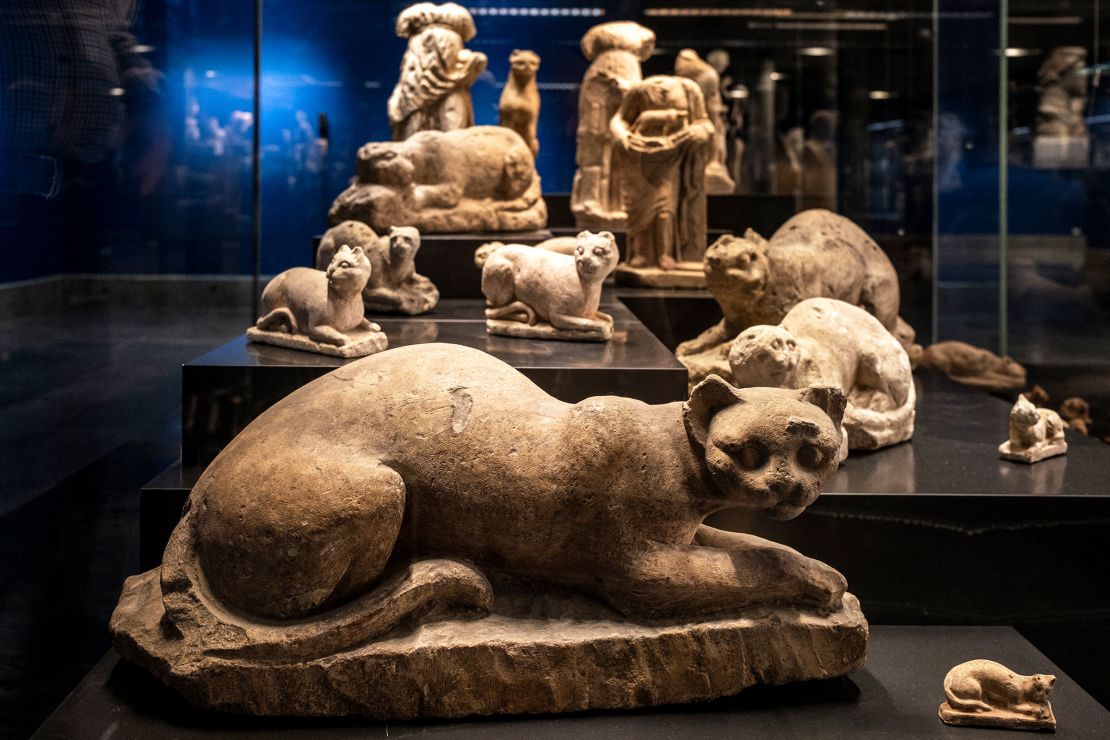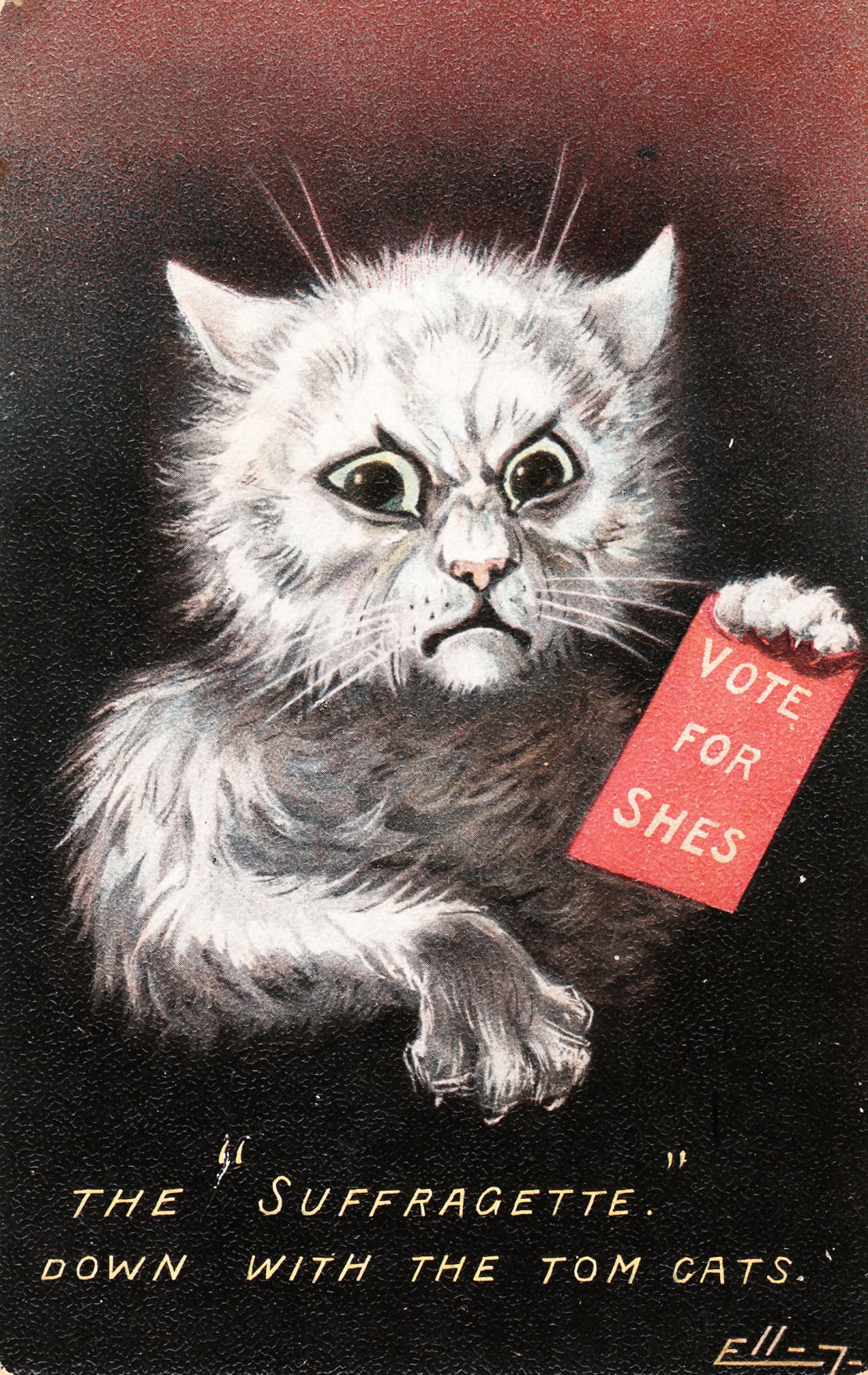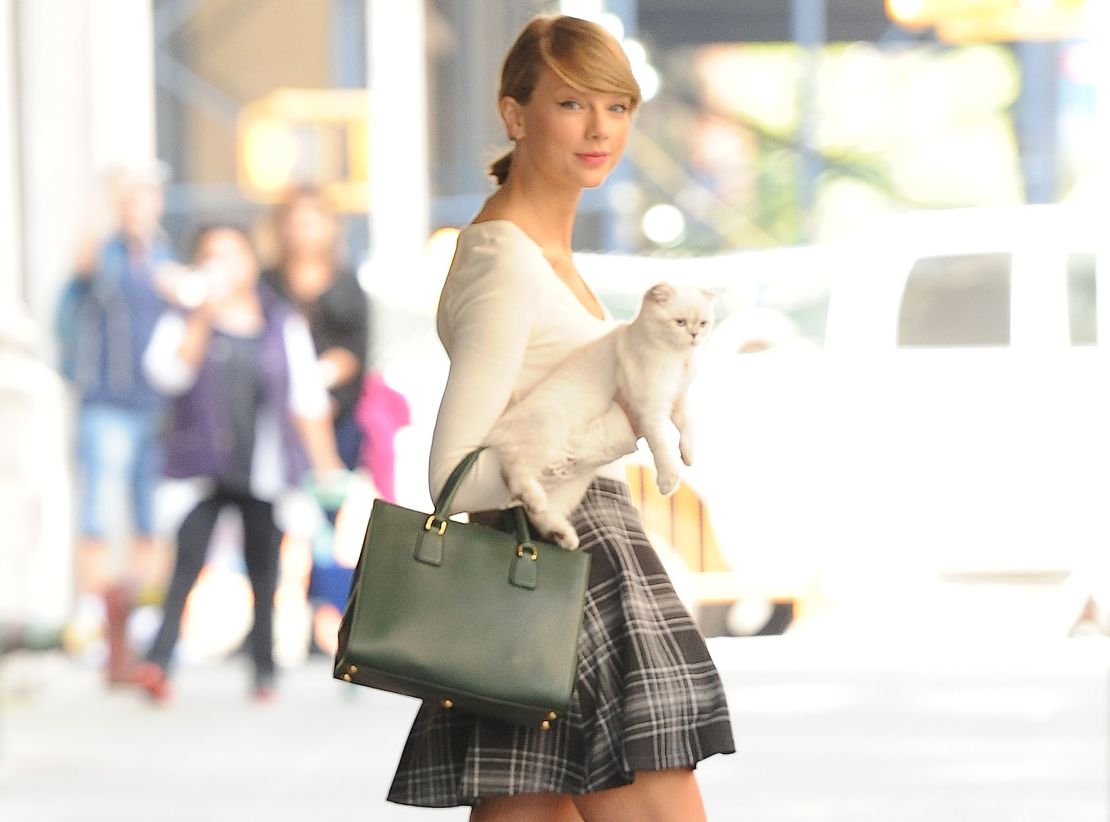The stereotypical “cat lady” is one of pop culture’s most bizarre characters — and easiest punching bags.
She’s “The Simpsons” recurring character Eleanor Abernathy, a reclusive resident of Springfield who speaks in gibberish and hurls her cats at passersby. She’s bedridden “Big Edie” Beale, tucked inside Grey Gardens, cuddling kittens while raccoons, rats and nature eat away at her decrepit mansion. She’s even Robert DeNiro in a 2004 sketch from “Saturday Night Live,” in which he plays a eccentric woman who lives with 80 cats.
She’s … Vice President Kamala Harris?
So said former President Donald Trump’s current running mate, Sen. JD Vance, in a recently resurfaced 2021 interview with Tucker Carlson. “Cat lady” is an insult usually reserved for women without children who share their homes with cats, but here, he used it to describe Harris and other politicians who don’t have biological children.
“We’re effectively run in this country, via the Democrats, via our corporate oligarchs, by a bunch of childless cat ladies who are miserable at their own lives and the choices that they’ve made,” Vance said. “And so they wanna make the rest of the country miserable, too.”
“You look at Kamala Harris, Pete Buttigieg, AOC — the entire future of the Democrats is controlled by people without children,” he went on. “And how does it make any sense that we’ve turned our country over to people who don’t really have a direct stake in it?” (Buttigieg and his husband announced that they adopted twins the month following Vance’s interview.)
Vance’s using “cat lady” as a dig at Harris “expresses hostility for women in public office by implying they should be at home” with children, said Fiona Probyn-Rapsey, a professor at the University of Wollongong in Australia who authored a chapter about “crazy cat ladies” in the nonfiction book “Animaladies.”
But Harris, the presumptive Democratic nominee for president, doesn’t fit the part of the stereotypical “cat lady.” She’s married, for one, and has two stepchildren. She’s a politician and therefore a public figure, not a shut-in. And as far as we know, she doesn’t own any cats.
“It’s a sexist framing for child-free women, but more importantly, it doesn’t seem to matter if she has children or not,” Probyn-Rapsey told CNN. “It’s a tool in the misogynist’s tool box — an attempt to exclude women from the public sphere and imply that her contributions to political life come at the cost of family, or, as Vance is implying, the whole nation.”

How the ‘cat lady’ was created
The stereotypical “cat lady” we know today is typically depicted as haggard, mentally unstable and willfully isolated save for her abundance of cats. And though Vance’s description of “cat lady” didn’t include “crazy,” madness has been associated with “cat ladies” for over a century.
In ancient Egypt, cats were symbolic of femininity, personified in the goddess Bastet, who was frequently portrayed as a cat or a woman with a feline head. The “felinization of women” in ancient society “reflected women’s power,” wrote Corey Wrenn, a sociologist from the University of Kent in a 2018 analysis of gendered feline imagery. But sometimes, Wrenn said, that power was perceived as “threatening and necessary to suppress.”

The reputation of cats grew more dangerous in medieval Europe, as did “deviant” women who didn’t adhere to the norms of childbearing and domesticity. Cats became associated with disobedient women like Agnes Waterhouse, thought to be the first woman executed for witchcraft in England upon her death in 1566. She apparently confessed that her pet cat, reportedly called Satan, had killed local livestock at her behest and had previously killed humans under the cat’s previous owner, also a purported witch.
“There is something about the independence of cats, something I like about them, which can be linked with a suspicion of independent women,” said Alice Madicott, whose book “Cat Women” prods the “crazy cat lady” stereotype. “A woman that chooses an animal that is arguably never entirely tamed is to be suspected of being untameable herself.”
The spinster stereotype was born in the 18th century, wrote Linda Rodriguez McRobbie in a 2017 piece for the Boston Globe. Women who couldn’t marry became “dependents in their relatives’ households,” Rodriguez McRobbie wrote, draining their finances and besmirching their social standings.
The great spinsters of literature were often portrayed as, if not monstrous, then ugly, cruel and unwanted. Miss Havisham of Charles Dickens’ “Great Expectations” goes mad with heartbreak and vengeance, never removing the wedding dress she wore when she was spurned at the altar. (Plus, Rodriguez McRobbie wrote, Havisham was said to be based on a real-life spinster who nursed her two cats and bulldog like children.)
Even beloved novelist Jane Austen, who was herself unmarried, wrote unflatteringly of spinsters: Miss Bates in “Emma” is, Austen writes, “neither young, handsome, rich, nor married” and often annoys her young heroine.
Cats once again became associated with spinsters gone mad. In the 1881 edition of the magazine Potter’s American Monthly, writer Hart Ayrault described unmarried women as “having failed in the prime object of existence” — marriage, in his view. He dispenses several stereotypes that we’ve come to associate with the “crazy cat lady,” including isolation, social rejection and a lack of maternal instinct for all creatures but her pets.
“Tradition associates her with cats and parrots, on which she is supposed to lavish all that is left of affection in her withered heart,” he wrote of spinsters.
Opponents of women’s suffrage used images of cats to attack the movement in the 19th century, too. In anti-suffragist cartoons published in the US, men were portrayed as the homemakers tasked with caring for children, cleaning the home and spending time with house cats while their formerly disenfranchised wives voted and emasculated them. Cats even stood in for women in anti-suffragist ads in the UK, which portrayed giving the right to vote to women as absurd as granting suffrage to cats.

Out of the spinster and the dangerously independent suffragettes grew the stereotypical cat lady we think of today. Real-life cat owners living in squalor like Big Edie in “Grey Gardens” and those seen in distressing episodes of the reality series “Hoarders” only shaded in the image that the term “cat lady” brings to mind.
But reducing people to the pets they own diminishes everything else about them, said Susan Michals, founder of the popular cat-centric convention CatCon.
“Anyone who is using ‘cat lady’ in a negative way is assuming a woman who loves her cat does not also have a rich, full life that includes friendships, career, and meaningful interests,” Michals told CNN.
Many women proudly reclaim ‘cat lady’
So-called cat ladies have been reclaiming the term for more than a century. Women’s suffragists took back the image of the cat in pro-suffrage advertisements, portraying themselves as hardscrabble fighters devoted to their cause. On a cross-country tour of the US, suffragists Nell Richardson and Alice Burke even adopted a black cat that became the “unofficial mascot” of their movement.
Today’s cat ladies are owning the term regardless of marital status. It’s emblazoned on T-shirts and books, and self-proclaimed cat ladies are using it to name their blogs and their cat-oriented businesses. And since Vance’s comments resurfaced this week, “childless cat lady” is now appearing on new merchandise including bumper stickers and yard signs.
Michals proudly wears the term “cat lady” because she’s unashamed of her love for cats — though she prefers “cat woman,” which brings to mind the various sexy iterations of the Batman antihero Catwoman, played with panache by the likes of Michelle Pfeiffer, Zoë Kravitz and Halle Berry.
“So go ahead, call me a cat lady,” she wrote in a 2019 essay for Glamour. “I run a cat convention! But it’s all about perception and reformatting what that means.”
Catwoman is the rare “cat lady” who’s seen as desirable despite her affection for cats. (Pfeiffer and Kravitz’s Catwomen both open up their small apartments to several strays.) Holly Golightly of “Breakfast at Tiffany’s,” too, is portrayed as a vivacious and attractive woman who also happens to own cats. Even billionaire superstar Taylor Swift is a cat person, with three cats of her own, and her pets haven’t dimmed her appeal.

“It seems cat-like aspects as a young woman are to be applauded, but owning a cat, especially once you approach middle-age and even worse if you are single, is a sign that something is wrong with you,” Madicott said.
The “crazy cat lady” taboo remains. Vance used it to insult Harris and other politicians who don’t have biological children. Even Swift expressed fear about becoming a cat lady in a 2015 interview with the Telegraph.
But Vance’s remarks against Harris and other politicians without biological children aren’t going unchecked. Kerstin Emhoff, the mother of Harris’ stepchildren, and Harris’ stepdaughter, Ella Emhoff, both said this week that Harris is a present and supportive parent. Jennifer Aniston, who has spoken about her own challenges with fertility, expressed disbelief that a “potential VP of the United States” would discuss women without children in a degrading way.
The insult has even inspired self-identified “childless cat ladies” and allies to rally around Harris and embracing the moniker. Even “childless dog ladies” and women who have both children and cats are expressing their support for the presidential candidate and cat lovers everywhere.
“’Childless’ — that’s often a choice,” Michals told CNN. “And ‘crazy’ can mean passionate and enthusiastic. It all comes down to context, and who’s delivering the message.”
The legion of cat and cat lady supporters is strong: Cats are second only to dogs as America’s most popular pet — over 37 million US households own a cat, according to 2022 statistics from the American Veterinary Medical Association. And one can never underestimate the power of loyal Swifties who align to defend their idol and her furry loves.
“Lots of people like cats and won’t stomach their affection being made a target for misogyny, so Vance will have to reckon with that!” Probyn-Rapsey said.




